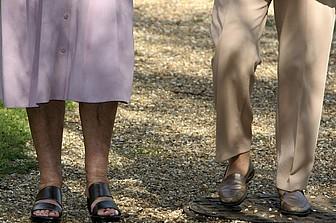Good vibrations help elderly stay mobile
Monday 22 October 2012

Using vibrating platforms like those found in gyms may help to prevent falls in older people, according to researchers from Guy’s and St Thomas’ and King's College London. When combined with exercise three times a week, older people’s mobility improved much more than through exercise alone.
Falls can seriously damage the health of elderly people and are the most common cause of accident-related deaths in the over 60s. Each year, around 30 per cent of people over 65, and 50 per cent of those of 80, will experience a fall. Strength and balance training can help to prevent this, but those who are frail may not be able to exercise for long enough to fully benefit. Vibration treatment may help plug this gap.
The Timed Up and Go (TUG) test is one way of measuring mobility and involves standing up, walking, turning and sitting down. After two months of standing on a vibrating platform for five bouts of one minute three times each week, older people increased their walking speed and completed their TUG test twice as much as with exercise alone. Exercise also helped to improve balance and ease worries about falling.
Dr Ross Pollock, research physiotherapist, carried out the research and was supervised by Professor Di Newham of King’s College London and Professor Finbarr Martin, consultant geriatrician at Guy’s and St Thomas'.
Professor Martin said: “It’s great that vibrating platforms, which are so readily available, can make such a difference to mobility. What we need now are larger studies to confirm that these encouraging results really can reduce falls. Improving mobility will help older people stay confidently independent for longer.”
56 patients were involved in the study, all recruited from the local falls clinics.
The study was published in the journal Clinical Rehabilitation.
Last updated: March 2022
Contact us
Media enquiries
Phone: 020 7188 5577
Email: [email protected]